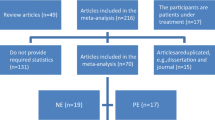Abstract
This study seeks to understand the role of the Internet in quality of life (QoL). Specifically, it examines the question of whether Internet communication serves, like face-to-face interactions, to enhance quality of life. It is hypothesized that the use of the Internet for interpersonal communication can improve quality of life among Internet users, just like face-to-face communication in everyday life. Sample survey data were collected in four Chinese cities, namely Hong Kong, Taipei, Beijing, and Wuhan, to serve as replicates to test the hypothesis. The Satisfaction with Life Scale (SWLS) of Diener (1984) was used to measure quality of life in the four cities. It was found that contrary to our expectation, Internet communication cannot predict quality of life while face-to-face communication with friends and family members can. The result was the same across the four Chinese cities. Possible reasons for this finding are examined and discussed.

Similar content being viewed by others
References
Beijing City Administration Portal. (2009). Beijing figures. Retrieved from www.beijing.gov.cn/rwbj/bjgm/bjsz/t354363.htm.
Birdwhistell, R. (1970). Kinesics and context. Philadelphia: University of Pennsylvania Press.
Boase, J., Horrigan, J., Wellman, B., & Rainie, L. (2006). The strength of internet ties. Washington, DC: Pew Internet & American Life Project. Retrieved from http://www.pewinternet.org/Reports/2006/The-Strength-of-Internet-Ties.aspx.
Clark, H. (1996). Using language. New York: Cambridge University Press.
Cohen, S., & Wills, T. (1985). Stress, social support, and the buffering hypothesis. Psychological Bulletin, 98, 310–357.
Culnan, M., & Markus, M. (1987). Information technologies. In F. Jablin, L. Putnam, K. Roberts, & L. Porter (Eds.), Handbook of organizational communication: An interdisciplinary perspective (pp. 420–443). Newbury Park, CA: Sage.
Daft, R., & Lengel, R. (1984). Information richness: A new approach to managerial behavior and organization design. In M. Staw & L. Cummings (Eds.), Research in organizational behavior (Vol. 6, pp. 191–233). Greenwich, CT: JAI.
Daft, R., & Lengel, R. (1986). Organizational information requirements, media richness and structural design. Management Science, 32, 554–571.
Department of Budget, Accounting & Statistics, Taipei Government. (2008). Significant statistical indicators in recent years. (in Chinese). Retrieved from http://w2.dbas.taipei.gov.tw/news_weekly/stindex/A_96.pdf.
Diener, E. (1984). Subjective well-being. Psychological Bulletin, 95(3), 542–575.
Diener, E., Suh, E., Lucas, R., & Smith, H. (1999). Subjective well-being: Three decades of progress. Psychological Bulletin, 125, 276–302.
Gove, W., & Geerken, M. (1977). The effect of children and employment on the mental health of married men and women. Social Forces, 56, 66–76.
Granovetter, M. (1973). The strength of weak ties. American Journal of Sociology, 73, 1361–1380.
Hampton, K, Sessions, L., Her, E., & Rainie, L. (2009). Social isolation and new technology. Washington, DC: Pew Internet & American Life Project. Retrieved from http://www.pewinternet.org/Reports/2009/18–Social-Isolation-and-New-Technology.aspx.
Hong Kong Government. (2008). Hong Kong statistics yearbook (2008th ed.). Hong Kong: Government Printer.
Krackhardt, D. (1994). The strength of strong ties: The importance of Philos in organizations. In N. Nohria & R. Eccles (Eds.), Networks and organizations: Structure, form, and action. Boston, MA: Harvard Business School Press.
Kraut, R., Kiesler, S., Boneva, B., Cummings, J., Helgeson, V., & Crawford, A. (2002). Internet paradox revisited. Journal of Social Issues, 58, 49–74.
Kraut, R., Mukhopadhyay, T., Szczypulia, J., Kiesler, S., & Scherlis, B. (2000). Information and communication: Alternative uses of the internet in households. Information Systems Research, 10, 287–303.
Kraut, R., Patterson, M., Lundmark, V., Kiesler, S., Mukhopadhyay, T., & Scherlis, W. (1998). Internet paradox: A social technology that reduces social involvement and psychological well-being? American Psychologist, 53, 1017–1032.
Lenhart, A., Madden, M., Smith, A., & Macgill, A. (2007). Teens and social media. Washington, DC: Pew Internet & American Life Project. Retrieved from http://www.pewinternet.org/Reports/2007/Teens-and-Social-Media.aspx.
Leung, L. (2001). College student motives for chatting on ICQ. New Media & Society, 3(4), 483–500.
Ni, P. F. (2007). Report on the competitive power of Chinese cities. Beijing: Social Science Literature Press. (in Chinese).
Parks, M., & Roberts, L. (1998). Making MOOsic: The development of personal relationships on line and a comparison to their off-line counterparts. Journal of Social and Personal Relationships, 15, 517–537.
Putnam, R. (1995). Bowling alone: America’s declining social capital. Journal of Democracy, 6, 65–78.
Putnam, R. (2000). Bowling alone. New York: Simon & Schuster.
Rice, R. (1984). Mediated group communication. In R. Rice & Associates (Ed.), The new media: Communication, research, and technology (pp. 129–156). Beverly Hills, CA: Sage.
Short, J., Williams, E., & Christie, B. (1976). The social psychology of telecommunication. London: Wiley.
Siegel, J., Dubrovsky, V., Kiesler, S., & McGuire, T. (1986). Group processes in computer-mediated communication. Organizational Behavior and Human Decision Processes, 37, 157–187.
Thoits, P. (1983). Multiple identities and psychological well-being: A reformulation and test of the social isolation hypothesis. American Sociological Review, 48, 174–187.
Walther, J. (1996). Computer-mediated communication: Impersonal, interpersonal, and hyperpersonal interaction. Communication Research, 23, 3–43.
Wellman, B., Smith, A., Wells, A., & Kennedy, T. (2008). Networked families. Washington, DC: Pew Internet & American Life Project. Retrieved from http://www.pewinternet.org/Reports/2008/Networked-Families.aspx.
Wellman, B., & Wortley, S. (1990). Different strokes for different folks: Community ties and social support. American Journal of Sociology, 96, 558–588.
Williams, A., Ware, J., & Donald, C. (1981). A model of mental health, life events, and social supports applicable to general populations. Journal of Health and Social Behavior, 22, 324–333.
Wuhan Statistics Bureau. (2008). Wuhan statistics yearbook, 2008. (in Chinese). Retrieved from www.whtj.gov.cn/documents/tjnj2008/index.htm.
Acknowledgments
Part of this research was supported by a grant from the Research Grants Council of Hong Kong (RGC Ref: CUHK 4315/01H). The support from the Centre for Quality of Life at the Hong Kong Institute of Asia-Pacific Studies, the Chinese University of Hong Kong is also gratefully acknowledged.
Author information
Authors and Affiliations
Corresponding author
Rights and permissions
About this article
Cite this article
Lee, P.S.N., Leung, L., Lo, V. et al. Internet Communication Versus Face-to-face Interaction in Quality of Life. Soc Indic Res 100, 375–389 (2011). https://doi.org/10.1007/s11205-010-9618-3
Accepted:
Published:
Issue Date:
DOI: https://doi.org/10.1007/s11205-010-9618-3




